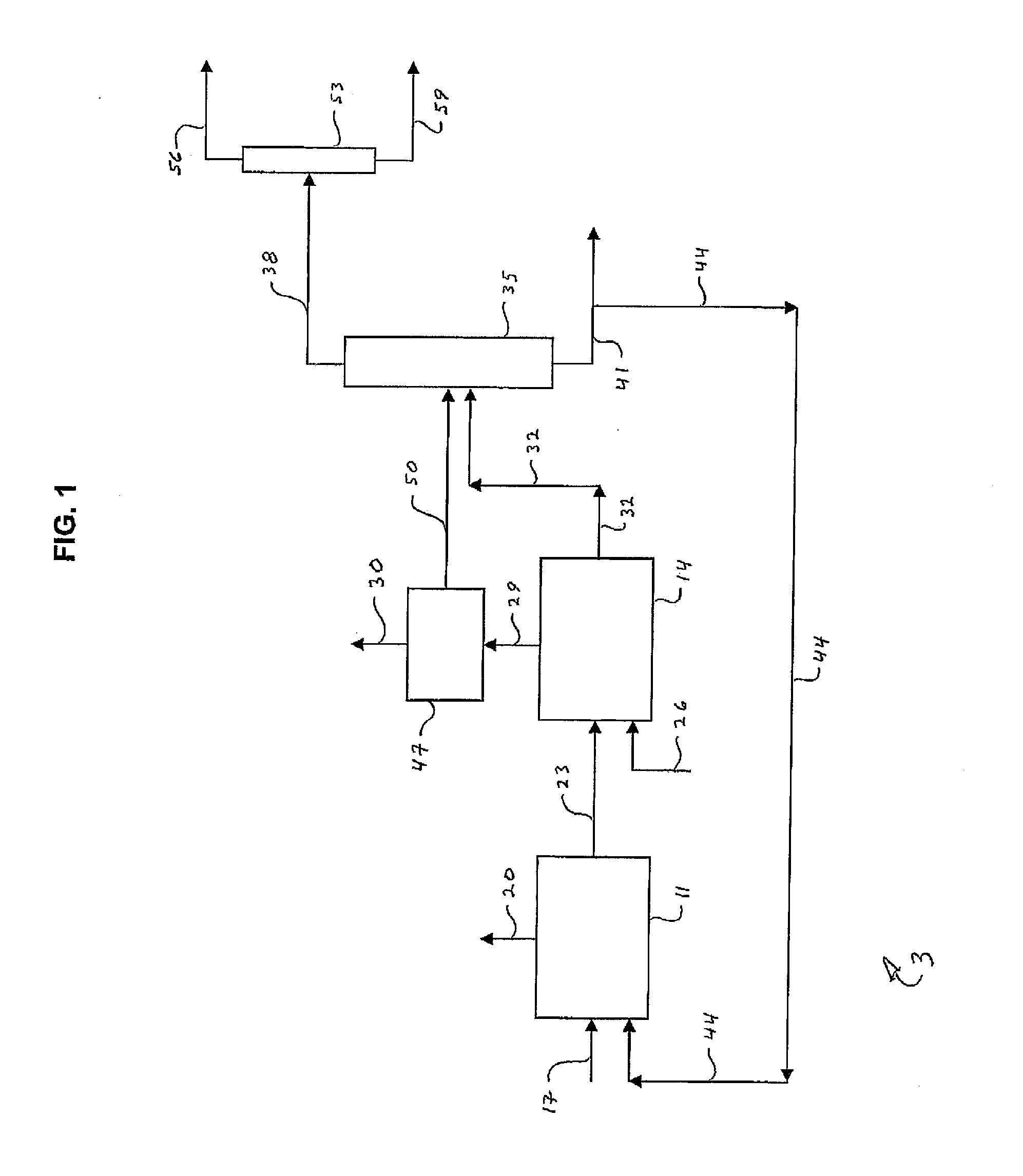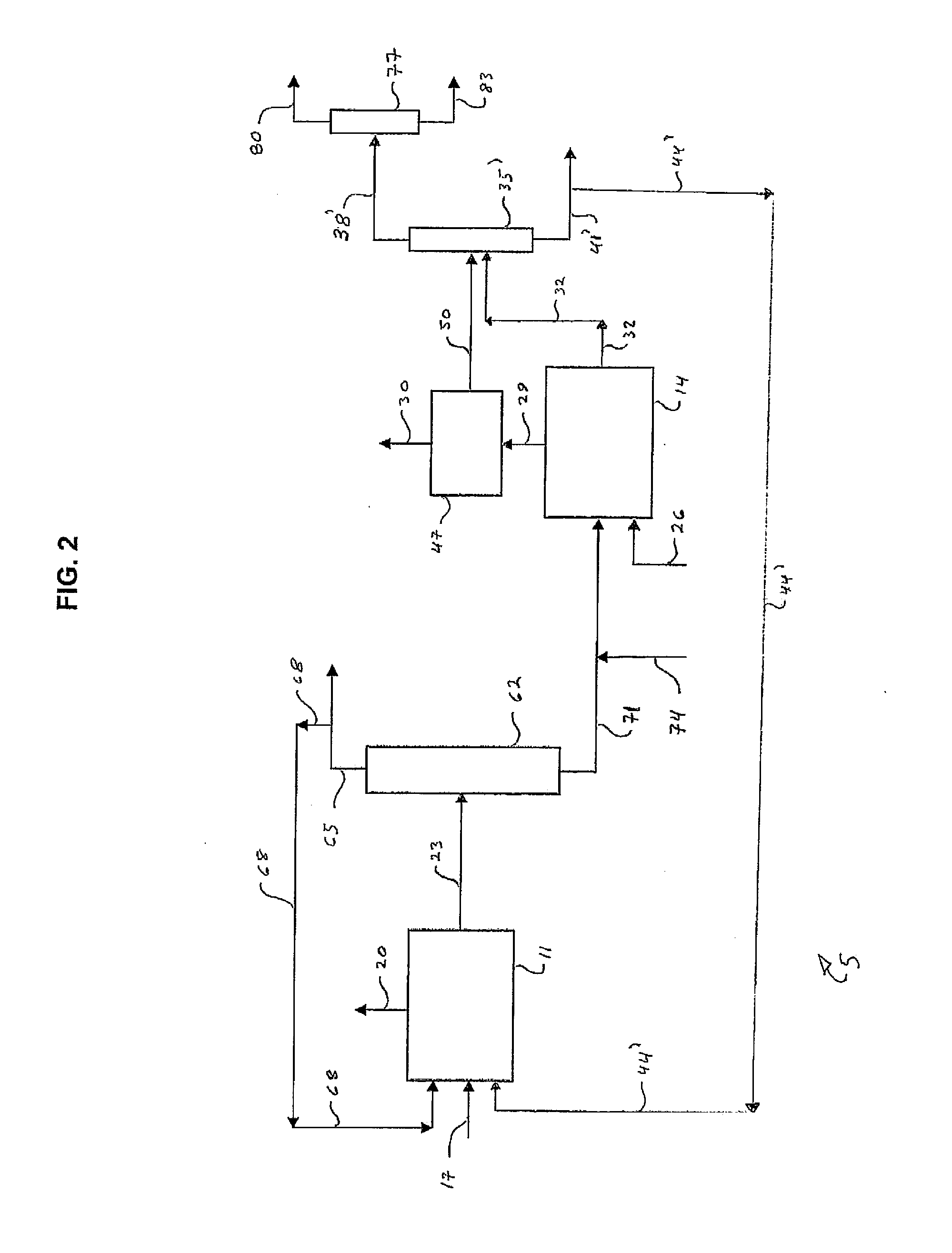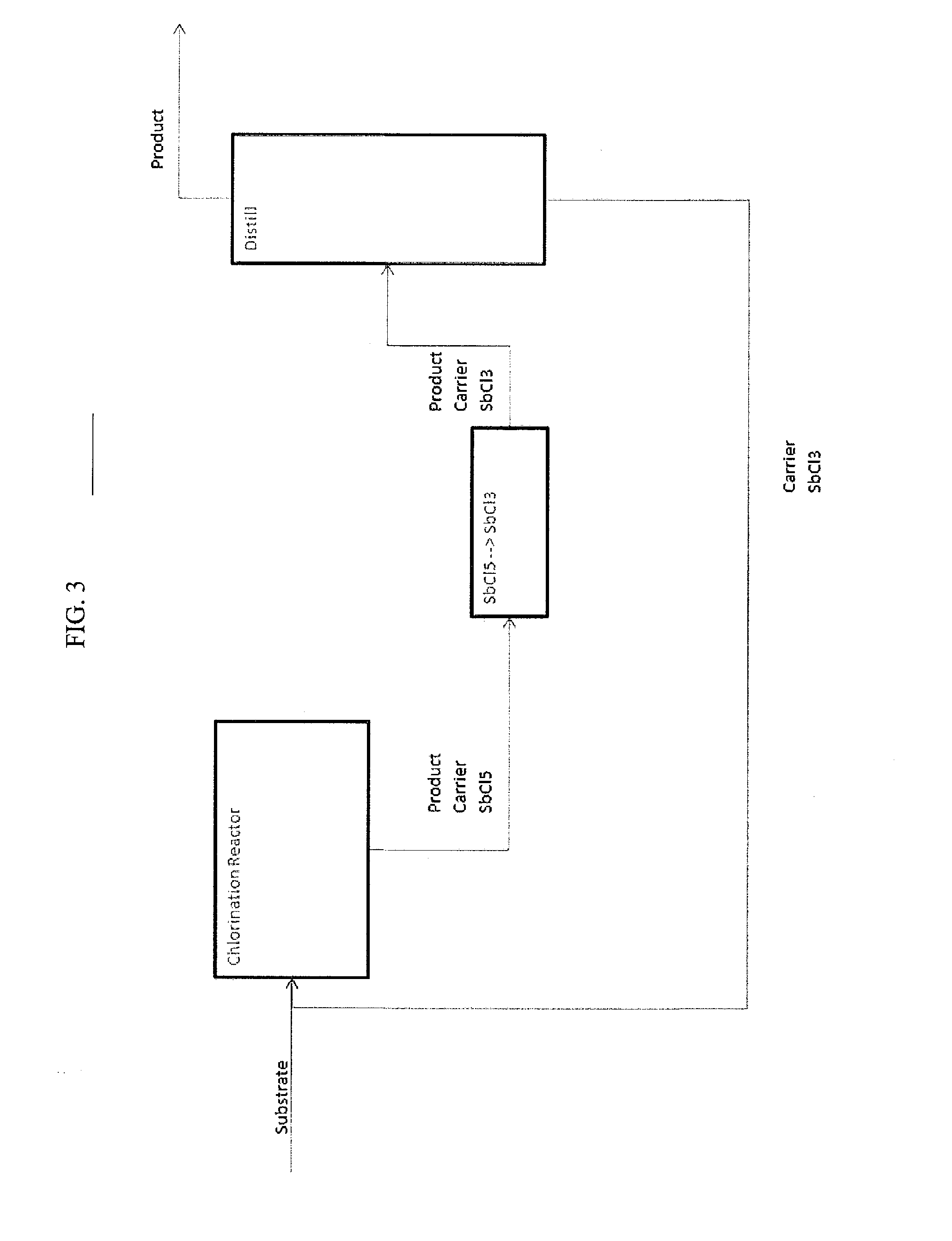Processes for Producing Chlorinated Hydrocarbons and Methods for Recovering Polyvalent Antimony Catalysts Therefrom
a technology of chlorinated hydrocarbons and catalysts, which is applied in the preparation of halogenated hydrocarbons, physical/chemical process catalysts, hydrogen halide split-off, etc., can solve the problems of increasing economic costs associated therewith, complex removal of antimony compounds from desired products, and high cos
- Summary
- Abstract
- Description
- Claims
- Application Information
AI Technical Summary
Benefits of technology
Problems solved by technology
Method used
Image
Examples
example 1
[0219]Present Example 1 demonstrates a non-limiting embodiment of the present invention, in which 1,1,1,2,3-pentachloropropane was prepared under batch conditions, using antimony pentachloride (SbCl5) as a catalyst.
[0220]To a 250 milliliter (mL) three-necked round bottom flask was charged 1,1,1,3-tetrachloropropane (147.1 grams) and antimony pentachloride (0.5 mL). The 250 mL three-necked round bottom flask was equipped with a chlorine inlet, magnetic stirring bar, 18 inch (45.72 cm) Vigreux column and a gas outlet, which was connected to a sodium hydroxide scrubber. The reaction flask was wrapped with insulating cloth to protect the reaction from ultraviolet light in order to suppress any free-radical chlorination that might occur. The amount of antimony pentachloride used represented 0.80 weight percent based on the amount of the tetrachloropropane reactant. The reaction mixture in the flask was heated to 70° C. by means of a heating mantle. Chlorine gas at 20° C. was added below ...
example 2
[0221]Present Example 2 demonstrates a non-limiting embodiment of the present invention, in which 1,1,1,2,3-pentachloropropane was prepared under batch conditions, using antimony trichloride (SbCl3) as a precursor of antimony pentachloride (SbCl5).
[0222]The procedure of Example 1 was followed, except that 143.5 grams of 1,1,1,3-tetrachloropropane was used, 0.90 grams of antimony trichloride was used (0.63 weight percent catalyst) and the reaction mixture was heated to 120° C. by means of the heating mantle. After three hours of chlorine feed, the flow of chlorine was stopped and the reaction vessel degassed with nitrogen. The crude reaction mixture (159.5 grams) was analyzed by GC and found to contain 1,1,1,2,3-pentachloropropane produced with 89% selectivity and 0.001 weight percent of 1,1,1,3-tetrachloropropane. The percent conversion of the tetrachloropropane reactant was calculated to be essentially 100 percent.
example 3
[0223]Present Example 3 demonstrates a non-limiting embodiment of the present invention, in which 1,1,1,2,3-pentachloropropane was prepared under batch conditions, using triphenyl antimony (Sb(C6H5)3) as a precursor of triphenyl antimony dichloride ((C6H5)3SbCl2).
[0224]The procedure of Example 2 was followed except that 0.5 grams of triphenyl antimony was used (0.35 weight % of catalyst), and the chlorine was added over 5.5 hours. After completing the chlorine addition, the reaction vessel was degassed with nitrogen. The crude reaction mixture was analyzed by GC and found to contain 1,1,1,2,3-pentachloropropane produced with 81.2% selectivity. The percent conversion of the tetrachloropropane reactant was calculated to be essentially 100 percent.
PUM
| Property | Measurement | Unit |
|---|---|---|
| boiling point | aaaaa | aaaaa |
| boiling point | aaaaa | aaaaa |
| boiling point | aaaaa | aaaaa |
Abstract
Description
Claims
Application Information
 Login to View More
Login to View More - R&D
- Intellectual Property
- Life Sciences
- Materials
- Tech Scout
- Unparalleled Data Quality
- Higher Quality Content
- 60% Fewer Hallucinations
Browse by: Latest US Patents, China's latest patents, Technical Efficacy Thesaurus, Application Domain, Technology Topic, Popular Technical Reports.
© 2025 PatSnap. All rights reserved.Legal|Privacy policy|Modern Slavery Act Transparency Statement|Sitemap|About US| Contact US: help@patsnap.com



